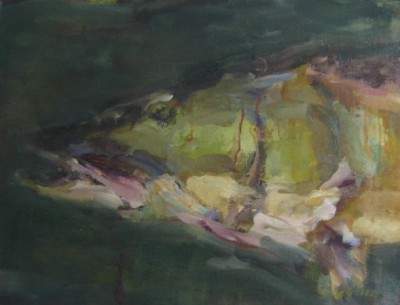According to Art News there’s a new book out about the age old subject of fish in art, “Fish have historically proved slippery subjects for artists—and not just for the obvious reasons. Until recently, fish couldn’t be photographed in their native environments, and artists had to rely on cloudy memories of seeing them underwater.”
“Similarly, a still life with a caught creature had to be completed swiftly, before the specimen rotted. Naturalist Christine Jackson’s Fish in Art, published by Reaktion Books, uses nearly 200 images of fish—ranging from ancient Egyptian wall works to 21st-century photorealist paintings—to illustrate their religious, social, political, and economic significance.”
The book is described by Art News as, “the first survey of fish in two-dimensional art, is divided by habitat, with chapters relating to the sea, the beach, the river, and still waters, as well as to the market, the kitchen, and, lastly, the table. Jackson isolates the aquatic animals’ form as one that has always fascinated artists. Strokes of black ink on silk in a Song Dynasty fan coalesce into a school of fish interweaving on a golden background; hundreds of years later, Paul Klee depicted them as flat, primitive shapes in neon colors.”
The book describes an art lesson once given by Eduard Manet to a pupil about still-life painting. “You don’t try to count the scales on the salmon,” Manet instructed, “you see them as little silver pearls against gray and pink.”
Apparently, there aren’t many contemporary interpretations of fish in the book. But lucky for you, we have plenty of contemporary interpretations of this classic subject here on Zatista.com. Since the earth is largely covered by the fish’s watery domain, we find the subject universally appealing. In many ways similar to art, water contains all the mysteriousness of the unknown.
Related articles












Comments (0)